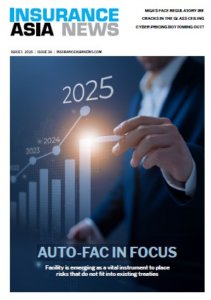Allianz: Megacities
November 10 2016
A recent Allianz publication: The megacity state: The world’s biggest cities shaping our future received widespread recognition. The document gives an insight into how human livelihood will evolve over the next 15 years and touches upon the challenges in risk and insurance, which society will face. In accordance with the United Nations (UN), Allianz defines megacities as urban areas exceeding 10 million inhabitants and describes them as highly interconnected, dynamic and vibrant centers, which will over time contribute higher income and living standards for their citizens.
The growth number for megacities is impressive. A 2006 UN working paper documented that there were only two megacities in 1950, Tokyo and New York City (NYC). The number increased marginally in the following quarter century to three in 1975, Tokyo, NYC and Mexico City. In contrast, the next 25 years saw a dramatic growth to 18 megacities in 2000. Since then, the digital age has reinforced the pull factor exerted by the megacity and makes it increasingly difficult for demographic experts and governments to extrapolate, forecast and steer the growth. In this respect, the above mentioned 2006 UN working paper predicted 22 megacities in 2015, while in reality the last year recorded 29 megacities – a good 30% above the UN forecast.
Megacities in their enormous size accumulate impressive physical, human and intellectual resources, they increase economies of scale and lower production costs.
-
QBE’s Hammond on transformation and growth
- July 2
The Asia chief executive discusses Covid-19, going digital and restructuring.
-
Swiss Re: Nat cats and man-made disasters in 2018
- April 10
Climate change, increased urbanisation and a growing concentration of assets were on the risk agenda for 2018.
-
Willis Towers Watson: 2019 Asia Market Report
- March 19
Economic uncertainty, more complex risks and tighter underwriting are all influencing Asia's markets.
-
Peak Re: Emerging Asia’s life and health opportunity
- March 11
Life and health premium growth is expected to outpace GDP gains in eight Asian markets.
-
Allianz General | Allianz General combines innovative protection solutions while powering social good to lead Malaysian market
The insurer proactively addresses emerging risks and evolving customer protection needs while giving back to the community.
-
Sedgwick | Asia’s Energy Transformation – Balancing Growth, Risk and Renewables
Energy market presents unique risks, especially in a region which includes China and Japan as well as developing nations like Vietnam and the Philippines.
-
Beazley | Turbulent Waters: the maritime energy transition challenge
Businesses are facing a complex transition to non-carbon energy sources amid a push to achieve net-zero emissions for the marine sector by 2050.
-
Aon | Navigating shifts in the global and Asia insurance markets
Neelay Patel, Aon head of growth for Asia, says the market in Asia is at an ‘interesting stage of the cycle’.

